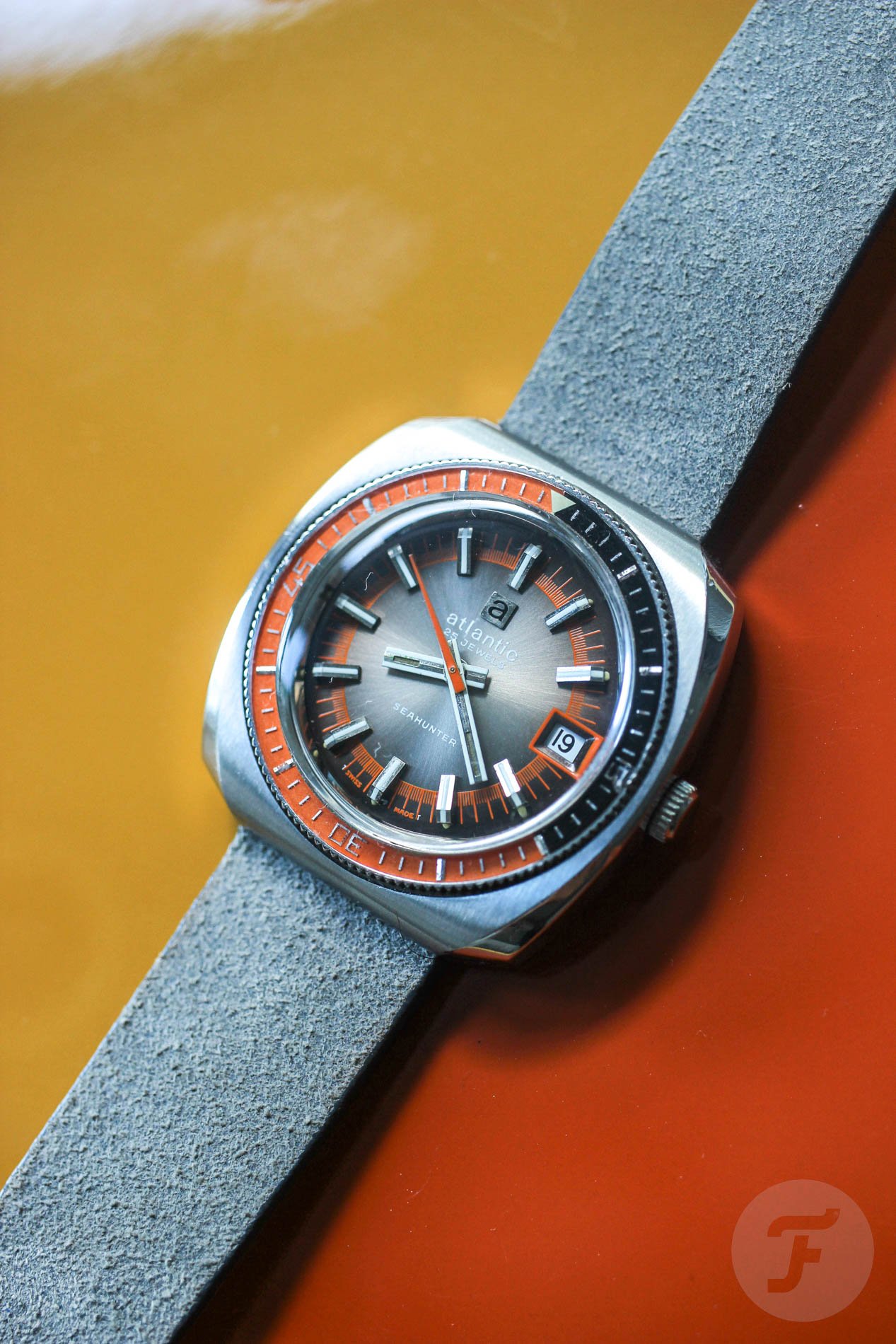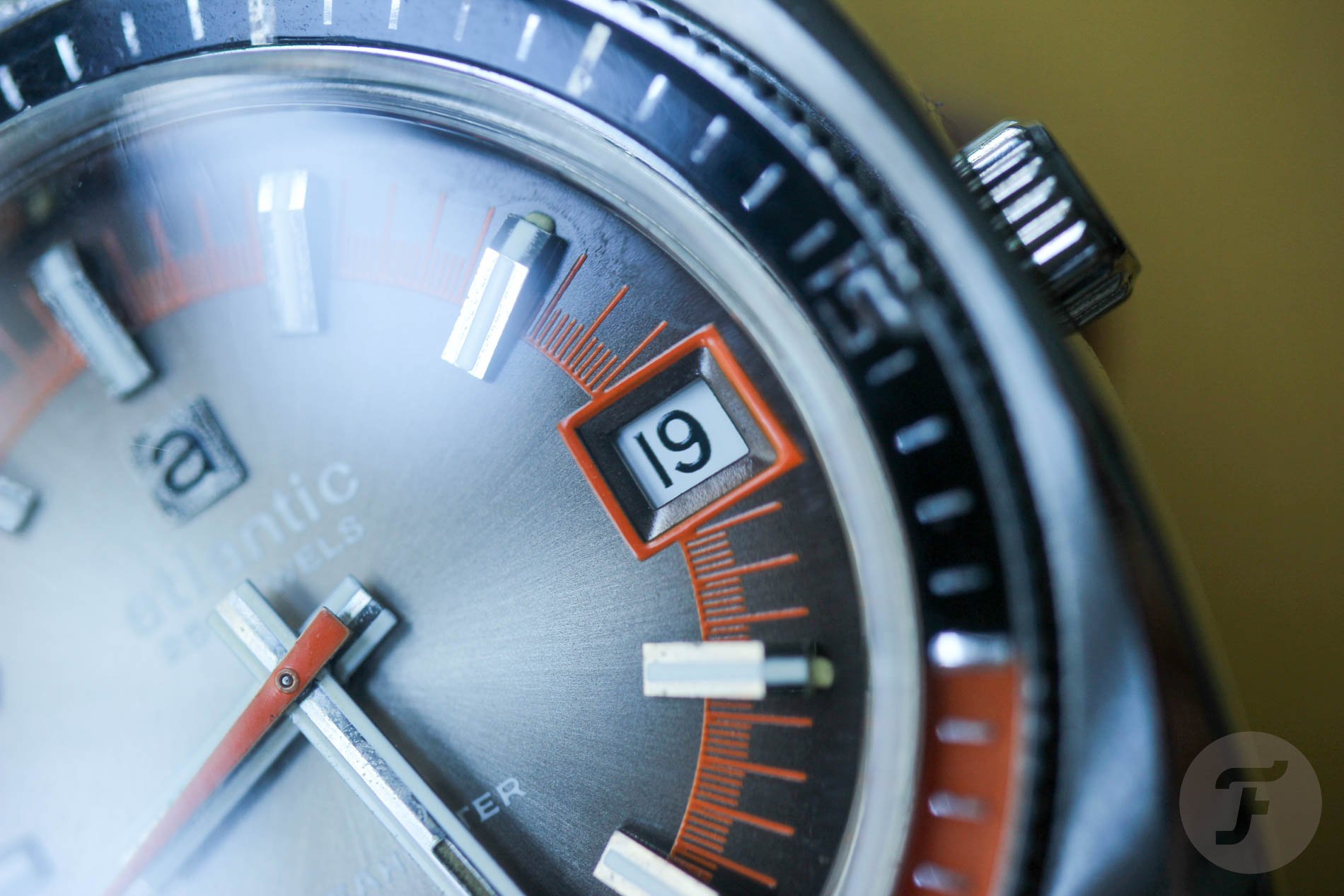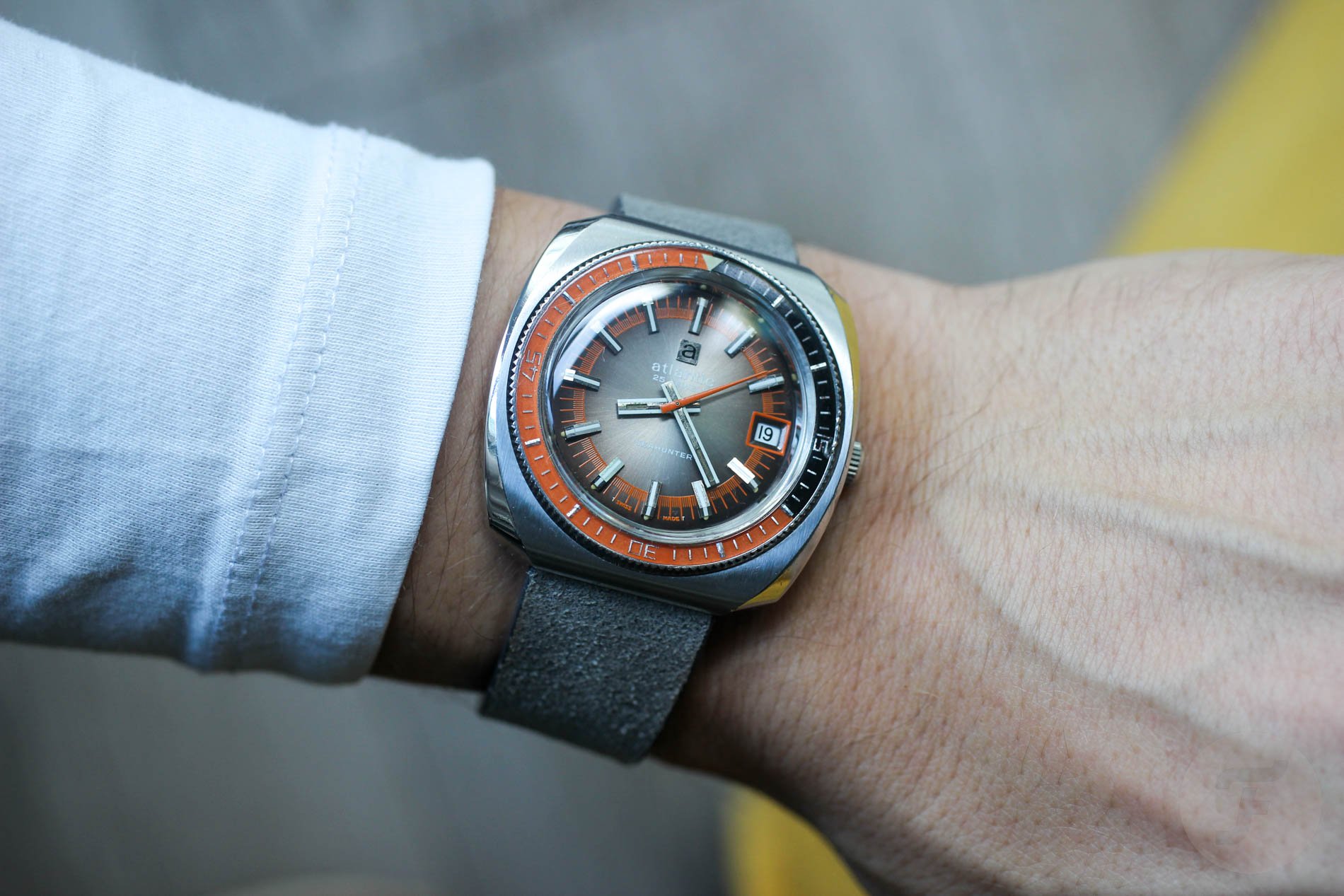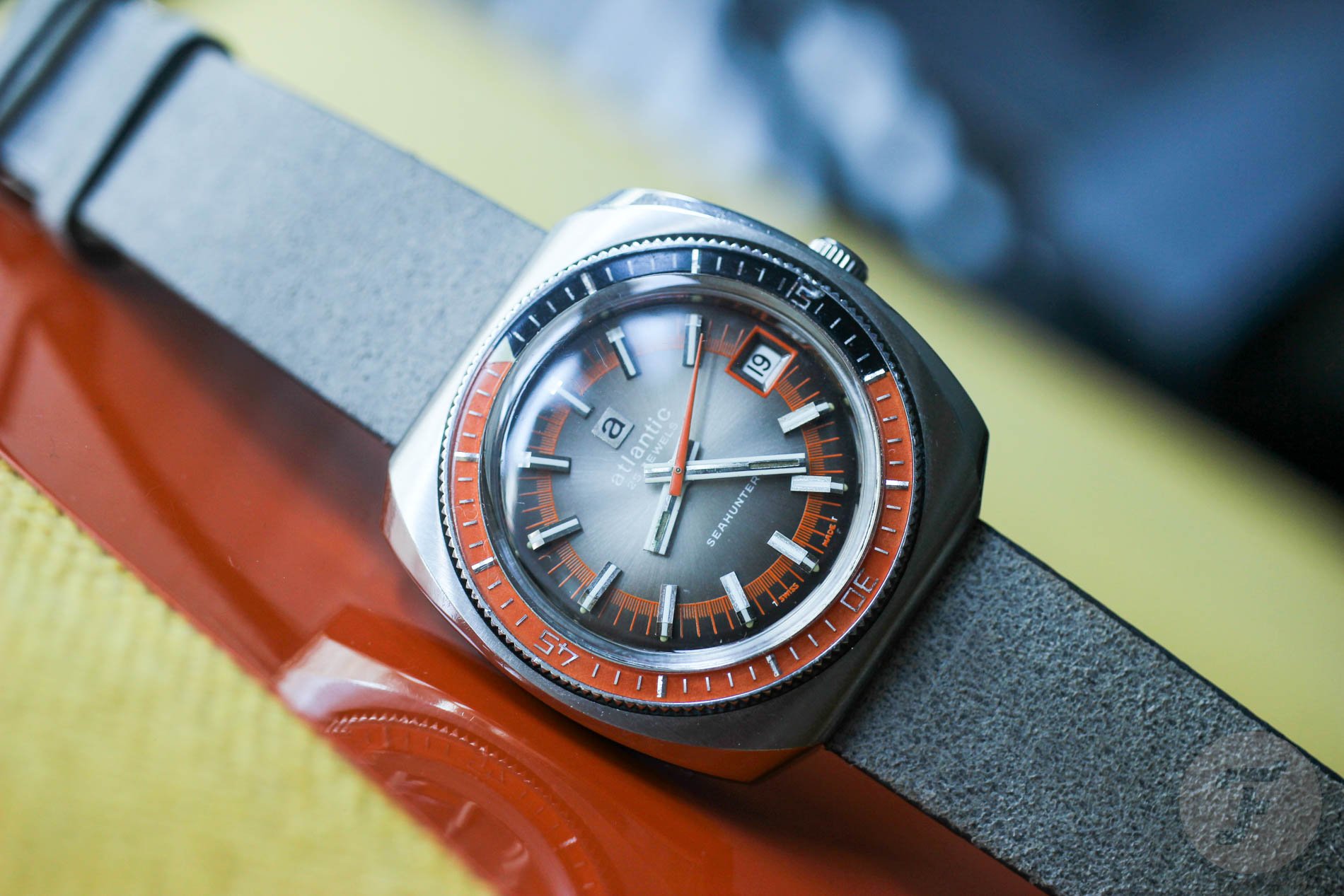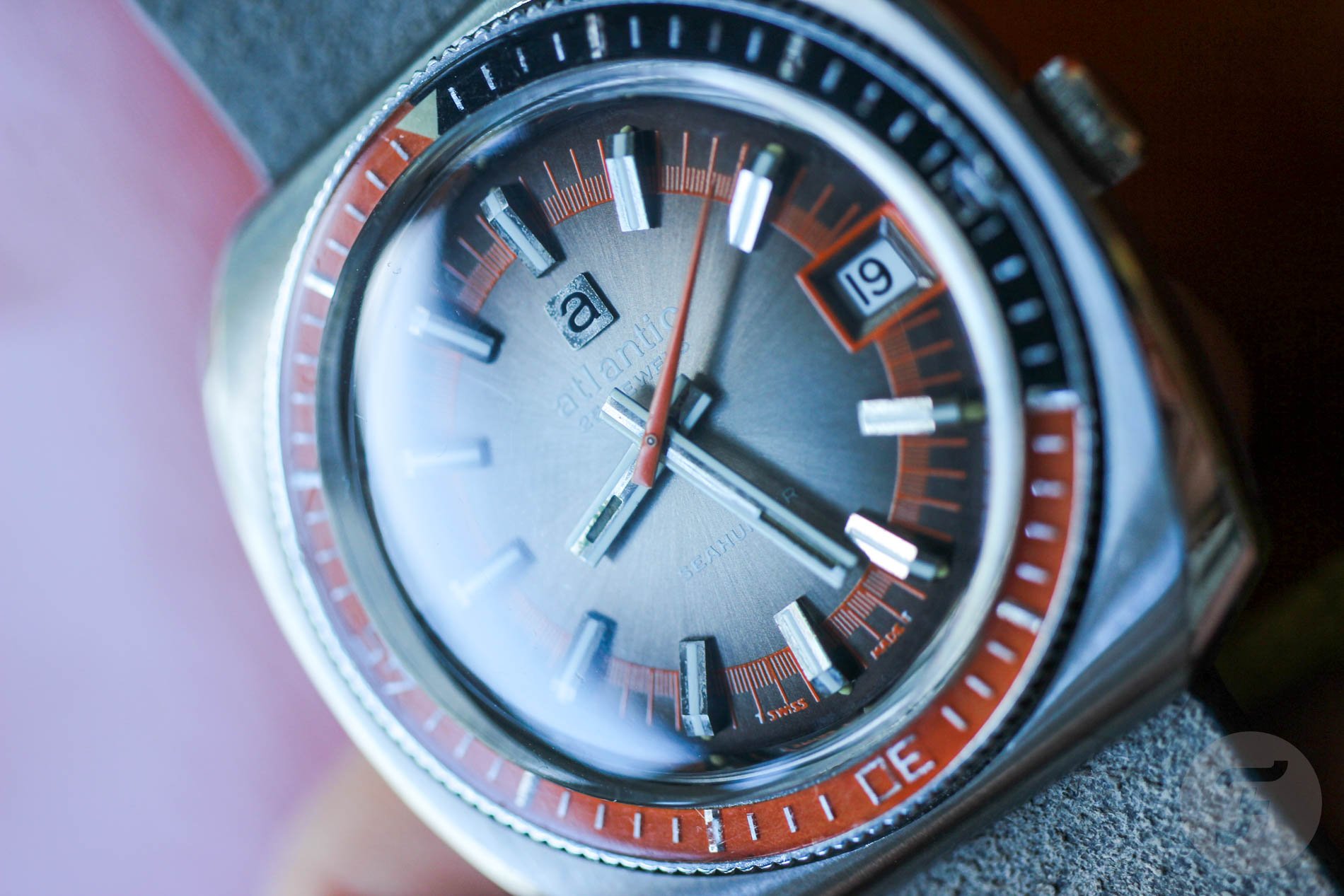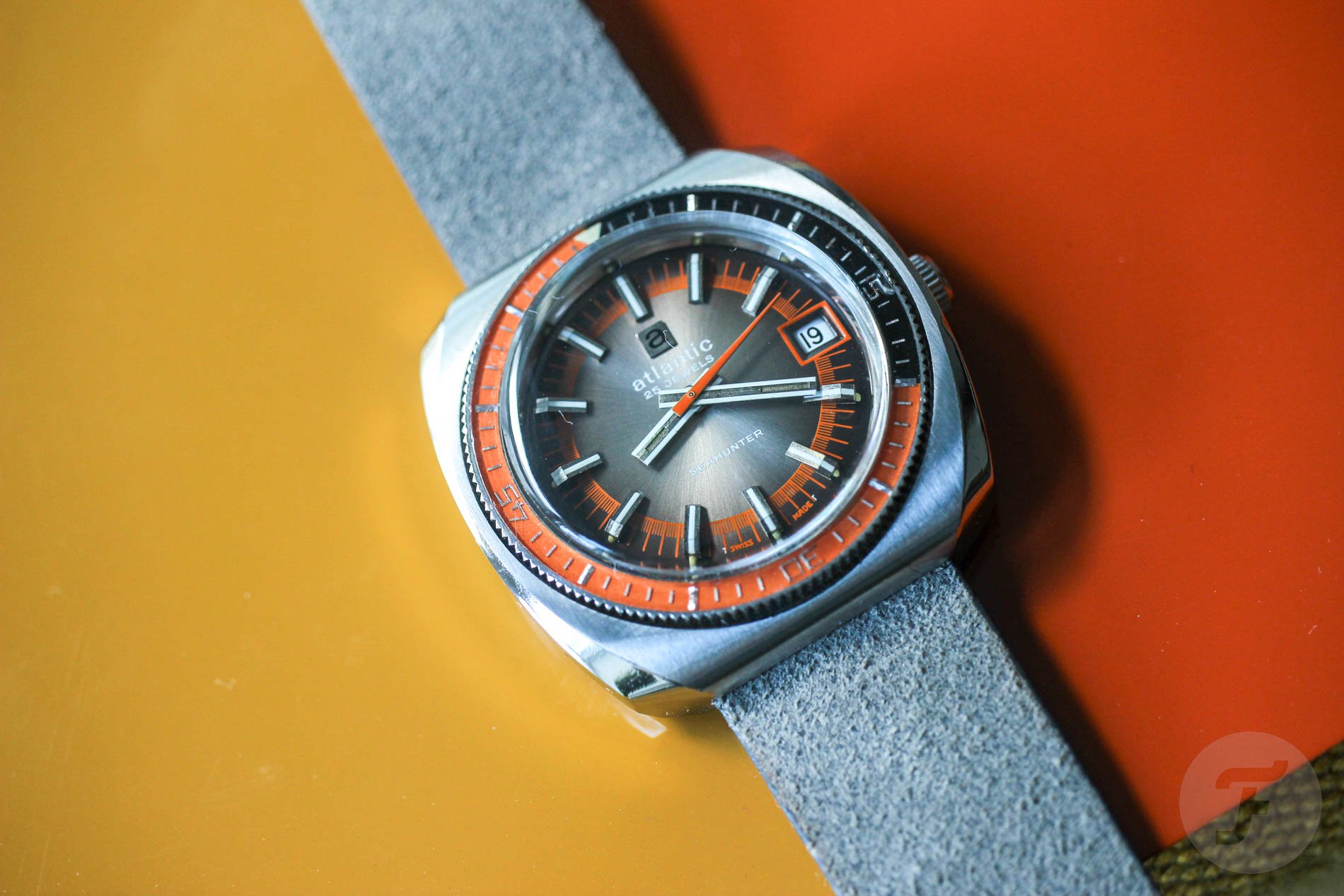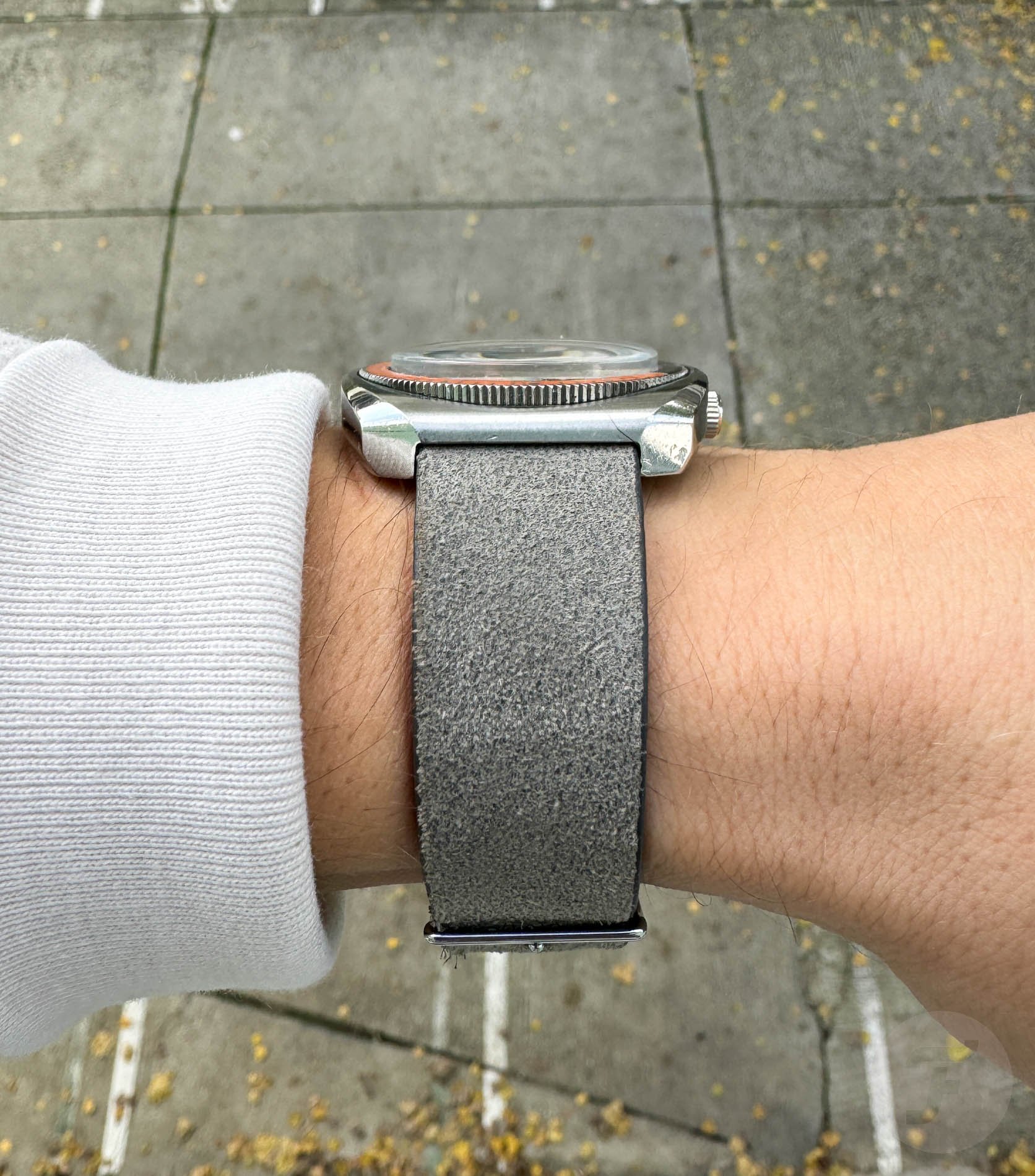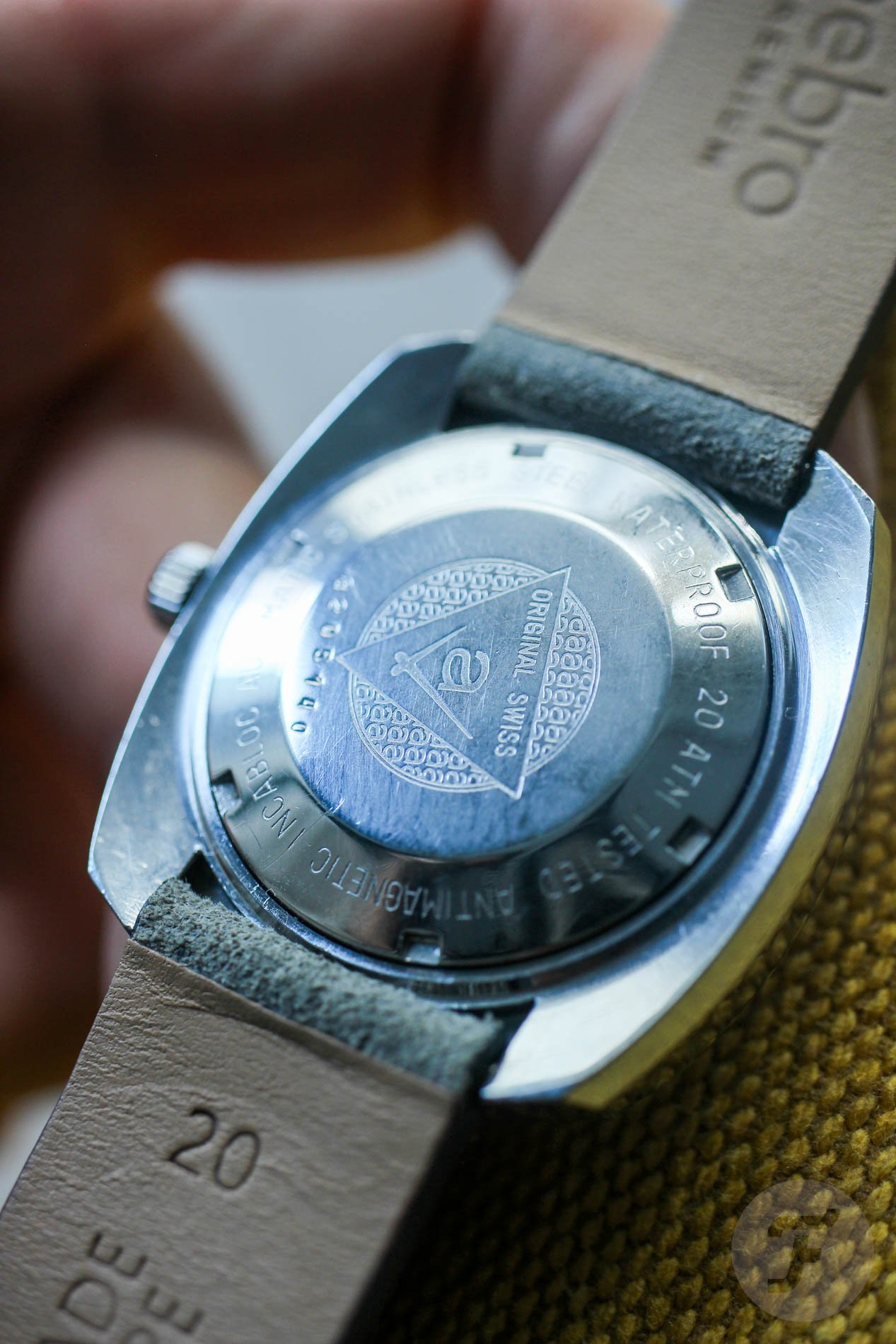#TBT The Atlantic Seahunter — A Low-Budget Beauty With A Bakelite Bezel
With the mood of the vintage watch market in line with the upcoming winter temperatures, now is about the right time to look for something unusual. I went deep into my safe to bring to light the Atlantic Seahunter, a low-budget piece with so many talking points.
To start, there’s the brand. If you collect vintage watches long enough and don’t limit yourself to usual suspects like Omega, Rolex, Zenith, or Breitling, you’ll most definitely bump into Atlantic. It’s the kind of brand that pops up a lot in the UK, Sweden, and Poland. There are tons of beautiful watches with the Atlantic logo on the dial, yet you probably don’t have that urge to pick one up. Call it “missing brand aura.”
Stunning Atlantic history
Now comes the surprise. The Atlantic watch brand traces its roots back to 1888 when Eduard Kummer established the EKB company that manufactured parts for pocket watches. In 1910, the company received a gold Medal at the London Exhibition, and in the 1920s, EKB produced multiple wristwatch models and started importing watches to the United States.
In 1953, the company celebrated its 65th anniversary. That’s when it began using the Atlantic name. In the late ’50s, Atlantic, side by side with Integra, Aristo, and Inventic watches, were imported into the UK. Kathleen Pritchard, the author of Swiss Timepiece Makers, 1775–1975, says that in 1966, the company no longer mentioned Kummer and was officially listed as Atlantic SA.
Polish Atlantic aficionados
Around that time, Eastern Europe became the main region of focus for Atlantic, and Poland, specifically, became the key market. If you check out the history section of the current Atlantic brand’s website (yes, believe it or not, the brand still exists!), you can find a digital book about Atlantic history. I have to say, I admire Wojciech Kutermankiewicz, the author of this book, for the research he has done over the years.
In it, you will find not only old print ads but also the full list of watch model names and logotype evolution over the years. In the latter part of the book, there is a chapter about movements used in Atlantic watches and a gallery of the watches introduced over the decades. And a few pages before the end, there is even a shot of a very similar Atlantic Seahunter watch. The caption under it confirms my assumption that the logotype and the case style date the watch back to the ’70s.
An unintentional but fortunate purchase
To be honest, the Atlantic Seahunter wasn’t my primary object of interest when I bid on it in an auction. I picked up my Atlantic Seahunter as a part of a three-watch-lot auction with my beloved Snowflake Oriosa. By the way, it has been three years since I have been on a hunt for that watch’s original bezel. I’m always checking all the possible and impossible auction sites, but I’ve had no luck. That only proves how much your patience gets tested before you score what you need…
Bezel poetry
But although the Atlantic Seahunter wasn’t my main target, I was happy to have it in there. I recognized its potential instantly thanks to the central dial’s brownish-metal gradient, the unusual sunshine-like orange minute track, and, most of all, the shiny Bakelite bezel. Everyone should have a vintage watch with a Bakelite bezel. Yes, these bezel inserts are fragile like eggshells, but unless you are going to chop wood with it, you should be fine.
The reflections that Bakelite provides are incomparable to any steel or aluminum bezel. Once you wear a Bakelite-bezel watch, you will find all the traditional divers a bit dull. I like how narrow yet perfectly legible this bezel insert is. The font for the 15, 30, and 45 numerals also looks pretty unique, and the orange highlighting gives it extra life. The reason that it avoided getting broken for five decades is because it’s sunken quite deeply into the case groove. Thanks to the quite sharp coin-edge teeth, rotating it is smooth.
The Atlantic Seahunter is rich in details
When the watch reached my doorstep, it needed a bit of TLC. Once it got a new crystal, I could see the dial in its full beauty. You can notice in the macro shots how steeply cut the beefy indexes are. The date would be a disturbing element, but its orange frame connects it nicely to the striking minute track. Another lovely detail is how the indexes bleed over their positions on the minute track and reach toward the center. This helps to connect the central sunburst with the track.
Thoughts on the case
I often don’t like watch cases from the ’70s because they feel bulky, chunky, and imbalanced. That’s not so with this one. While its shape makes it easy to place on a timeline, it is much more decent than many of its contemporaries. Most importantly, it feels light. That’s the attribute that a lot of ’70s cases are missing. Look at the picture above, and notice the gradually opening beveled edge that becomes the imaginative lug. What a great touch!
Last thoughts on the Atlantic Seahunter
I can hardly imagine a better entry-level vintage diver than the Atlantic Seahunter. It has all you want to see on your vintage dive watch besides the fat price tag. If you found the brand boring, remember the rich Atlantic history. And don’t hesitate to take the watch off and set it on your desk while you work so you can explore all the case’s shapes or the Atlantic engraving on the back. Happy hunting!

